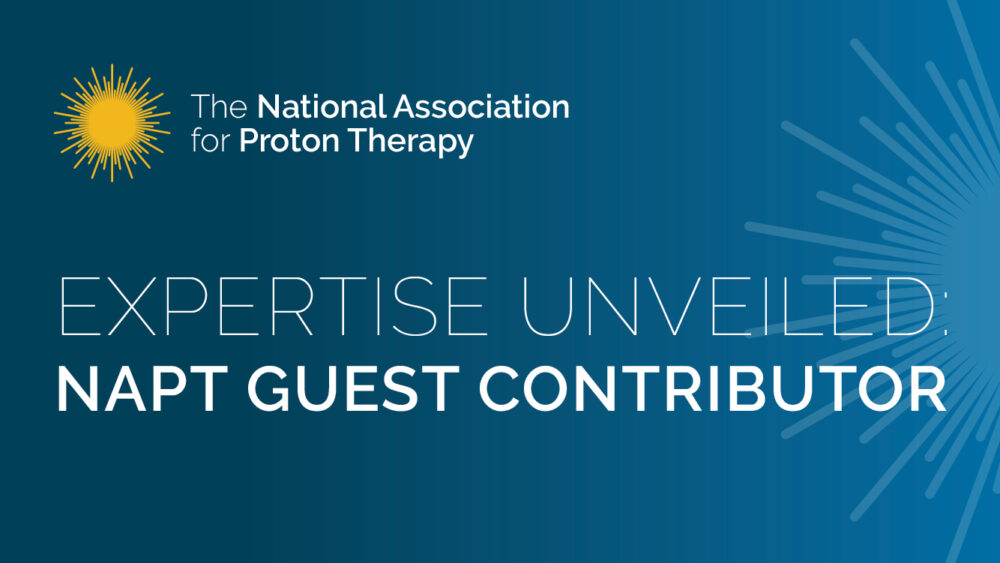Steven J. Frank, MD, FACR, FABS, FASTRO
Executive Director
Particle Therapy Institute
MD Anderson Cancer Center
April marks Head and Neck Cancer Awareness Month—a timely opportunity to highlight new research that may transform the standard of care for patients. A multi-center, randomized Phase III trial led by Steven Frank, MD, professor of Radiation Oncology at The University of Texas MD Anderson Cancer Center, compared proton therapy with traditional photon therapy in patients with oropharyngeal cancer. Preliminary results presented at the 2023 ASCO Annual Meeting revealed improved progression-free survival and significantly reduced treatment-related side effects.
Dr. Frank’s team continues to evaluate long-term outcomes and the economic value of proton therapy for both patients and payers.
Targeted Treatment, Reduced Side Effects
Proton therapy’s ability to precisely target tumors while sparing nearby healthy tissue offers a key advantage in treating head and neck cancers. In the study, patients who received proton therapy had a 33% relative reduction in feeding tube dependence, resulting in better nutrition, fewer hospitalizations, and enhanced quality of life. They also experienced lower rates of severe toxicities such as lymphopenia and neutropenia. Many were able to continue working during treatment, preserving both personal well-being and economic stability.
Driven by Patient Impact
Dr. Frank’s motivation for this research stems from personal experience treating patients with proton therapy.
“When I saw my first patients treated with proton therapy, I immediately recognized they had improved outcomes. That was my ‘aha moment.’ I knew I had to validate these benefits with the highest level of clinical evidence.”
His commitment has led to continued efforts to quantify proton therapy’s long-term value through both clinical and economic lenses.
Examining Cost and Value
In 2022, Dr. Frank received a Health Equity Research & Innovation (HERI) grant to further assess proton therapy’s value in head and neck cancers. His ongoing study explores cost-effectiveness, comparative outcomes, and financial toxicity. This work evaluates key metrics such as reduced hospitalizations, lower feeding tube dependence, and maintained productivity—all of which contribute to broader cost savings for patients and society.
Policy Implications and Access Challenges
Despite growing evidence, many patients still face access barriers. NAPT’s latest annual survey found that more than 65% of proton therapy cases require prior authorization, with over 72% experiencing treatment delays. These delays can be devastating for patients facing aggressive cancers.
“This Phase III randomized trial confirms that proton therapy is a cost-effective curative option for oropharyngeal cancer,” said Dr. Frank. “These data should inform policy and ensure timely access for those who need it most.”
A Patient-Centered Future
This pivotal research marks a significant shift in the treatment of head and neck cancers. By including patient-reported outcomes like quality of life and work productivity, the study emphasizes proton therapy’s far-reaching value—from clinical success to societal and economic benefit.
As evidence continues to build, proton therapy stands at the forefront of a more precise, effective, and patient-centered approach to cancer care.
EXPERTISE UNVEILED: A GUEST CONTRIBUTOR SERIES
We bring together the brightest minds and most experienced professionals in the field of proton therapy. In this distinguished guest contributor series, experts share invaluable insights, breakthrough research, and real-world experiences in advancing proton therapy. Join us as we delve into the world of proton therapy, exploring its intricacies and potential through the eyes of those who know it best. Interested in becoming a contributor? Email info@proton-therapy.org for more information.





